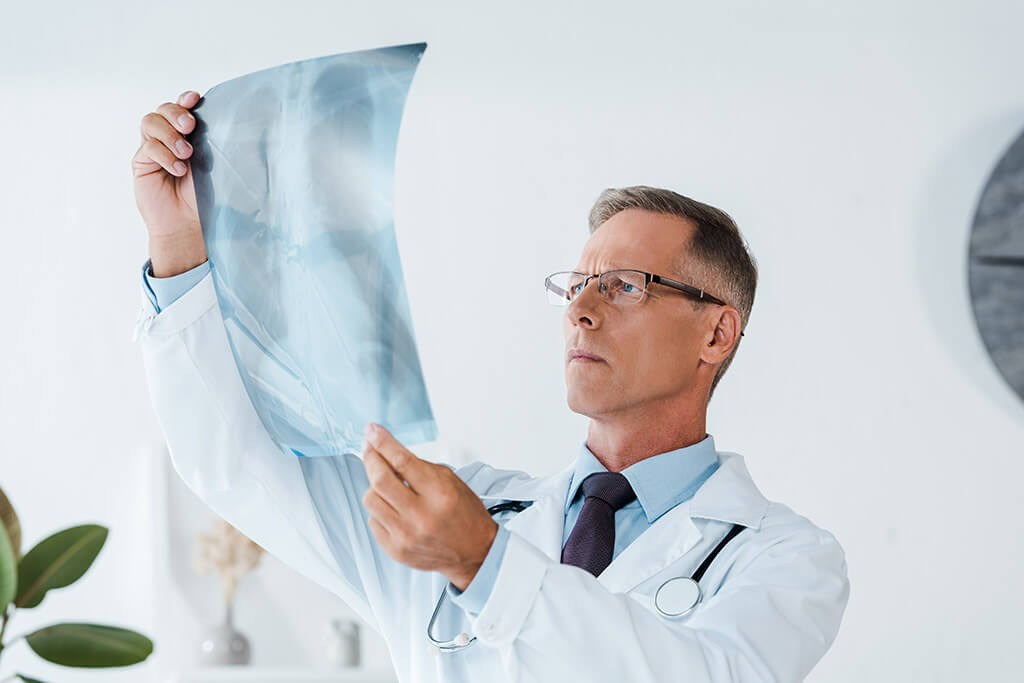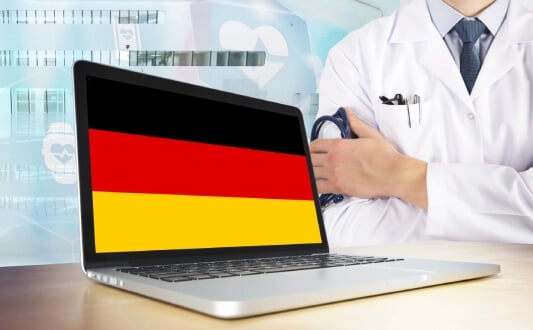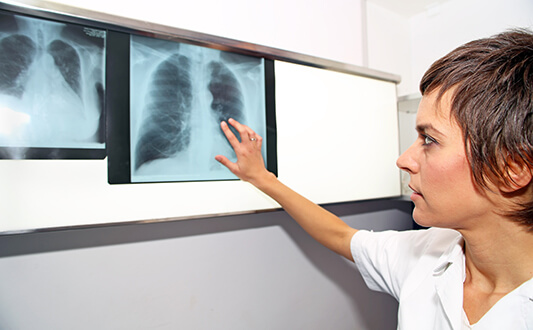Sarcoidosis development is connected with an immune system overreaction to bacteria, viruses, or chemical substances. Immune inflammation leads to the formation of granulomas in various organs (lungs, lymph nodes, skin, eyes, etc.). Nevertheless, intrathoracic involvement is the most common disease manifestation. Causing shortness of breath, chest pain, and a dry cough, sarcoidosis requires pharmacotherapy in combination with non-drug therapeutic options. Although there is no cure for sarcoidosis yet, the appropriate treatment regimen reduces inflammation and alleviates symptoms. Clinics of Germany, Turkey, Switzerland, and other developed countries offer comprehensive sarcoidosis therapy.
Content
- Confirming the diagnosis
- Treatment with a focus on pharmacotherapy
- Non-drug therapeutic options and lifestyle modifications
- Choosing the optimal therapy for sarcoidosis with Booking Health
Confirming the diagnosis
Prior to the therapeutic regimen elaboration, a doctor estimates the extent of internal organs’ affection with clumps of inflammatory cells. Starting with a physical examination (checking skin for bumps or rash, checking lymph nodes, listening to the heart and lungs, etc.), he will then proceed to more objective and informative instrumental methods:
- Chest X-ray allows for checking lung tissue for granulomas and reveals swollen intrathoracic lymph nodes. This is the most easy-to-perform and cost effective diagnostic procedure.
- Chest CT scan gives detailed cross-sectional images of the thoracic organs. In some patients, a CT scan is enough for a diagnosis confirmation.
- Lung function test reveals the affection of the lung capacity. During the procedure, a patient breathes out into a spirometer. This is a device that measures the speed and amount of air a patient blows out. When affected by sarcoidosis, lungs typically do not work as well as healthy ones.
- Bronchoscopy includes the direct examination of the inner surface of the lungs and respiratory tracts. A bronchoscope is a tiny flexible tube with a small camera and light source. A doctor inserts a bronchoscope through the mouth or nose. Sometimes, sedation with a local anesthetic is performed in order to avoid unpleasant feelings.
- EBUS-TBNA procedure is somewhat similar to a bronchoscopy, except it is supplemented with an ultrasound examination and a biopsy is performed. A EBUS-TBNA procedure is more likely to give a precise diagnosis than a conventional bronchoscopy.
- Biopsy includes taking a sample of the affected lung tissue for subsequent microscopic investigation. A biopsy is typically performed during a bronchoscopy or EBUS-TBNA procedure.
Laboratory tests may be carried out additionally (e.g. complete blood count, blood test for vitamin D and angiotensin-converting enzymes). Such tests do not confirm the diagnosis but are helpful in assessing a patient’s health state and in prognosis making.
Treatment with a focus on pharmacotherapy
In most cases, treatment of sarcoidosis starts with watchful waiting, as symptoms of the disease may improve without therapy, due to the abatement of a pathological immune response. If the immune inflammation is severe enough, immunosuppressive medications are administered.
Corticosteroids. The most common drug from this pharmacological group is prednisone. Prednisone is a nonspecific anti-inflammatory agent. Initially, your doctor may prescribe higher prednisone doses in order to control the inflammation better. Once the symptoms alleviate, the dose is decreased slowly. The maintaining dose of prednisone is prescribed afterwards.
Methotrexate, azathioprine, hydroxychloroquine, and mycophenolate are nonsteroidal immunosuppressive agents. These drugs block different stages of immune cell repair and replication. Thus, the immune response abates and the inflammation becomes less pronounced. Some of these drugs, e.g. methotrexate, can be administered simultaneously or in place of prednisone.
Infliximab and adalimumab are the chimeric monoclonal antibodies that prevent lung damage, due to TNF-alpha (tumor necrosis factor-alpha) blocking. TNF-alpha inactivation leads to pro-inflammatory cytokines synthesis suppression at local and systemic levels. This results in milder inflammatory processes and improves a patient’s quality of life.
The length of therapy may vary. Some people take drugs for a few years; others may need medications for much longer. The main aim is to prevent complications of the disease (e.g. lung infections, cataracts, kidney failure, etc.) and improve the patient’s quality of life.
Non-drug therapeutic options and lifestyle modifications
When a patient is in partial or complete remission, preventive measures come to the fore. Actually, people with sarcoidosis are able to carry on with their usual social and physical activities, leading their normal lives. By following simple and reasonable recommendations, a person with sarcoidosis can avoid the disease exacerbations:
- Quit smoking and using tobacco products. Although smoking doesn’t cause sarcoidosis, it worsens lung function.
- Avoid chemicals, toxic inhalants, or dust that can damage your lungs, e.g. use a gas filtering device if you need to stay in a severe environment.
- Restrict calcium-rich foods and vitamin D, give preference to fresh fruits and vegetables.
- Be physically active, pay attention to your pulmonary rehabilitation.
- Get 6 to 8 hours of sleep every night.
In addition, you should undergo regular medical check-ups. Make sure that you visit your healthcare provider at least once a year or as soon as possible if any symptoms develop.
Choosing the optimal therapy for sarcoidosis with Booking Health
As sarcoidosis treatment includes not only preventive measures and conservative therapy, but also lung transplantation (in severe cases), people may seek specialized healthcare services outside their native countries. For instance, medical treatment in Germany includes a full range of diagnostic and therapeutic procedures, guiding a patient from precise diagnosis making to comprehensive pulmonary rehabilitation.
Those patients who do not have experience of undergoing therapy in foreign hospitals, may use the help of Booking Health, the unique international provider of medical tourism. Booking Health professionals will:
- help in making your choice between clinics, based on the qualification profiles;
- establish contact directly with your future doctor;
- book the appointment;
- elaborate the preliminary medical program;
- provide favorable cost of treatment; avoid additional coefficients for foreign patients (saving up to 50%);
- issue medical insurance with а coverage of €200,000, valid for 4 years;
- monitor medical program at all stages;
- help in buying and forwarding drugs and medical products;
- keep in touch with the healthcare facility after the treatment program’s completion;
- control invoices and take care of the return of unspent funds;
- arrange additional examinations;
- book hotels and plane tickets, arrange transfers.
To start planning your treatment abroad, just fill in the “send request” form on the official website of Booking Health.
Choose treatment abroad and you will for sure get the best results!
Authors:
The article was edited by medical experts, board certified doctors Dr. Nadezhda Ivanisova, Dr. Sergey Pashchenko. For the treatment of the conditions referred to in the article, you must consult a doctor; the information in the article is not intended for self-medication!
Sources:
Read:
Why Booking Health - questions and answers
How to make right decision when choosing the clinic and specialist
7 reasons to trust to the rating of clinics on the Booking Health portal
Don't know where to start?
Contact Booking Health







